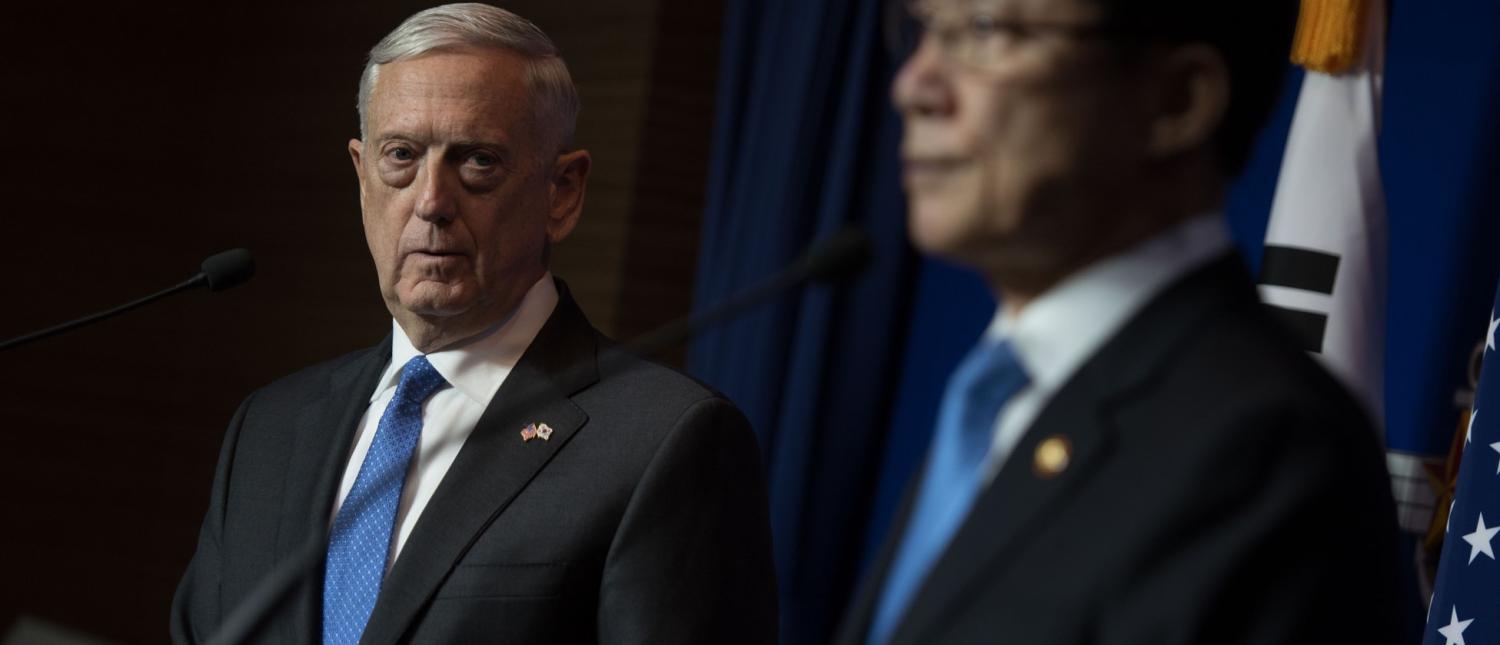“The United States now has two competing national security doctrines – Trump’s and that of his national security team.”
That’s Tom Wright from the Brookings Institution (and a Lowy Institute Nonresident Fellow), writing in The Atlantic. He makes a compelling point. While new policy documents, such as the National Defense Strategy and National Security Strategy, mark a shift from an emphasis on counterterrorism to great-power competition, Trump’s speeches fail to reflect that change:
Compare the new strategic doctrine to three of President Trump’s recent speeches – one that launched the National Security Strategy, his address to the World Economic Forum in Davos, and yesterday’s State of the Union. In each, there was at most a single, obligatory, passing reference to rivals like Russia and China, with little elaboration. In his speech to launch the National Security Strategy, he immediately followed up this reference with a plea for partnership with Putin.
Wright argues that it is on North Korea that this tension between the President and the bureaucracy is most dangerous:
A strike on North Korea could kill tens of thousands, or even hundreds of thousands, of South Koreans. If carried out over the objections of the South Korean government, it would likely result in the collapse of the US–Korea alliance, and perhaps dissolve its relationships across East Asia more generally. Worryingly, a preventive strike on North Korea is the one area where he appears to have persuaded some officials on the National Security Council, including H. R. McMaster, although Defense Secretary Jim Mattis is believed to remain adamantly opposed.
If one takes Trump’s statements at face value, he is unlikely to be moved by these dangerous possibilities. He worries only about the North Korean nuclear threat to the United States. If he can eliminate that threat, the collapse of US influence in the region may be a price worth paying. After all, he has been a critic of the US–Korea alliance for over 30 years.
This is an intriguing thought. Many commentators have written about the likelihood of North Korea’s ability to strike the US mainland with an intercontinental ballistic missile (ICBM) triggering a “decoupling” between the US and its North Asian allies. With US population centres at risk, these allies will cease to believe that the US is willing to come to their defence.
But Wright’s insight here is that decoupling may actually serve Trump’s purposes, or at least his instincts. As a proponent of “America First” and a consistent critic of US alliances, for Trump, decoupling may be a feature rather than a bug. At the very least, if Trump is contemplating a preventive strike on North Korea’s nuclear infrastructure, the fact that such action will erode US alliances seems unlikely to have much impact on his decision-making.
Still, I find Wright’s argument ultimately unconvincing. As a defender of America’s forward presence in Asia, Wright clearly sides with the Trump Administration’s national security team on this matter and disagrees with the President. Wright wants to see these alliances preserved as part of “a broader geopolitical agenda to shape the international order”.
That type of language was popular in the early post–Cold War period, when the US was a lone “hyperpower”, and maintaining America’s global presence carried few risks. But in Asia, those days are over.
Wright spends a lot of time talking about Russia in this article, and when he does mention China, it is mainly in conjunction with Russia. In effect, Wright treats these two countries as equals in a three-way global power contest with the US.
But this overstates Russia’s position (President Obama was closer to the truth in 2014 when he called Russia a “regional power that is threatening some of its immediate neighbours, not out of strength but out of weakness”) and understates China’s: the recent Australian Foreign Policy White Paper, for example, estimated that China’s economy could be worth US$42.4 trillion by 2030, versus US$24 trillion for the US.
Against an economy of that size, not to mention a nation which seems bent on acquiring strategic leadership in Asia at US expense, the cost of maintaining America’s presence may be much higher than Washington, and America’s voters, are prepared to pay. North Korea’s ICBM raises that cost even further.
Wright closes his essay with the observation that the national security establishment’s worldview will inevitably win out: “In the long run, the United States will shift to a foreign policy focused on great-power rivals because that is where the international system is headed.” But there’s nothing inevitable about that shift; it is the product of choices made by the protagonists.
China’s rise presents a type of challenge America has never faced before in the Asia Pacific: in economic terms it is much more substantial than the Soviet Union (always more of a European power); and on present trends China’s military capabilities in the region will match those of the US in a decade or two. It is not unimaginable that, against a rival of that size, and when America’s interest in maintaining its Asia-Pacific primacy are far from clear, the US chooses not to join the fight.

